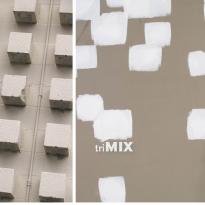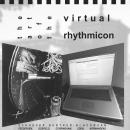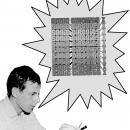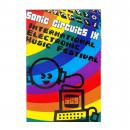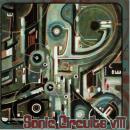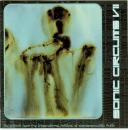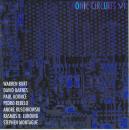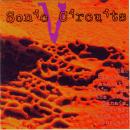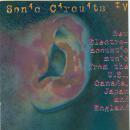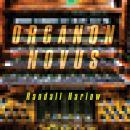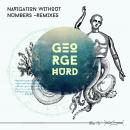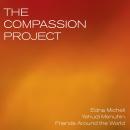Trimix: compiled by TJ Norris
Trimix: compiled by TJ Norris
Portland, OR
| TriMIXiTunes Album Page | |||
|---|---|---|---|
| Song Title | Time | Price | |
| 1. | Six Inside (Mastered Version) [After Beequeen] | 03:54 | $0.99 |
| 2. | Skeleton (Bestesends Mix) [After Humenctant Interruption] | 05:51 | $0.99 |
| 3. | Le gocce dell'uomo del campo (After Illusion of Safety) | 08:21 | $0.99 |
| 4. | Sign On (After Aranos) | 04:23 | $0.99 |
| 5. | Those Who Will Be (After M. Behrens) | 04:50 | $0.99 |
| 6. | Gal-fel (Informed) [After Rapoon] | 04:25 | $0.99 |
| 7. | Asmusmenge 1 (After Asmus Tietchens) | 06:50 | $0.99 |
| 8. | Continuum (Remix) [After Scanner] | 08:13 | $0.99 |
| 9. | Land of Confusion (After C. Renou) | 06:24 | $0.99 |
| 10. | Rina's Ribena | 07:01 | $0.99 |
| 11. | Dell[e] | 08:01 | $0.99 |
A living archaeology of Portland, Oregon, would include its abandoned shipyards and warehouses, its layers of graffiti, and industrial detritus. Through the lens and imagination of artist TJ Norris, however, it takes on a sumptuous other-worldliness. He has unpeeled its ever-evolving history — of culture and place — in a set of three gallery installations together dubbed Tribryd. ‘Trimix’, this CD/DVD set, now re-imagines those events in yet another light.
TJ asked eleven international sound artists, including such underground stars as Scanner, SETI, and Asmus Tietchens, to create electronic works that would accompany him on his photo journeys around the industrial Pacific Northwest. These sounds were then remixed and became an intrinsic part of the installations, along with three new video works by such luminaries as Sue Costabile and Ryan Jeffery.
The emptiness and beauty of the urban landscape is captured in TJ’s artwork:
“In the past five years I have witnessed much change along the Willamette River as it snakes through the central core of the city into new neighborhoods like South Waterfront. As it parts the compass on its two sides, the mighty body of water provides a front for contemporary surveyors to find old and new layered evidence, a history of change. I've photographed under the many bridges, into train depots and many in-between spaces to unlock the secrets and roar of their giant silence.”
Even if you have never been down a back alley in Oregon you will find these sound and visual works resonating deep into the psyche, insistant timeless nature among the concrete.
Nice release and a good conception. in some way reawakening of some industrial stuff . Gal after illusion of safety i like most :)
- Gintas K, Ways and Mistaken Pathways
Part remix series, part gallery installation, part soundtrack, part DVD, this is kind of a tricky release to trace a path through, but here’s how the story goes: Portland-based artist TJ Norris puts together a 3-part series of installation under the umbrella name Tribryd, featuring photographs of derelict, abandoned and uninhabited spaces around the city (see some here). One theme of the Tribryd installations is the ever-shifting archaeology of the urban landscape. As part of his strategy for taking the pictures, Norris asks a number of musicians to write soundtracks for him to listen to whilst photographing. The pictures are taken and the installations put together, featuring as a key component new remixes of the original soundtracks. On top of this, the exhibitions also feature new video works by artists such as Sue Costabile and Ryan Jeffery using, if you still follow, several of the originally-commissioned soundtracks.
What you get on this two-disc release is a CD of the remixed tracks that were used in the installations and a DVD with four video works using the original soundtrack material. Norris’s own work appears at the end of the DVD as a swift slideshow survey of one of the Tribryd exhibitions. Although this recording is Norris’s project, he is foregrounding the efforts of his collaborators as something independent from the artworks with which they were so closely entwined. As you unpeel the layers of collaboration you hear echoes of Norris’s visual record of urban change. Many of his photos are of graffiti tags, stencils or posted bills, images that have authors themselves, and are often piled on top of one another, or juxtaposed by Norris in diptychs. It becomes impossible to say who did what, or what that ‘what’ is any more. Authorship and material detach and float freely, leaving you instead with the trace of steps taken through a series of artistic psyches.
The result might have been a plateau of dull compromise, but triMix really works as something in itself because of the variety of musical responses it has compiled, from post-melancholy guitar to minimalist noise washes. Although several tracks are strikingly beautiful it’s not an album to leave on while you do the washing up; but a closely attended journey through its many facets shows this to be a very successful sonic artwork in its own right.
- Tim Rutherford-Johnson, Johnson's Rambler
Humans cannot help but make beauty. The little love-machine inside us all channels its message of humanity through any surface, within any medium, regardless of purpose or intention. It can't help but do so. On triMIX, some of these artists found it. And Norris found them. Judging by his portfolio (click here to view), he has a knack for finding beauty in unexpected places. This he does with the triMIX compilation.
Track 6 ["Gal-fel (Informed)" by Xela (after Rapoon)] is one of the more structurally traditional songs. Beautiful guitar repetitive melodies and arpeggios bud, bloom, build on top of one another. Really nice. Very soothing. But then with track 7 ["Asmusmenge 1" by Freiband (after Asmus Tiechens)], the album magnificently deteriorates into a rumbling collection of garbled, rumbly bass static. But gently. And then this further deteriorates (and, again, not in the usual, pejorative sense of the word) into a long and piercing beeeeeeeeep. But the segues between guitar, then static, then beep are smooth and necessary to the expression --which ends up being very real, emotive, powerful. It's somehow more satisfying when you can experience beauty where you wouldn't expect it to be. It's reassuring. And the magic of unpredictability and indeterminacy is all the rage in physics (first quantum physics, then string theory [I hella watch Nova, dude!]) and in the philosophy of literature (post-structuralism, post-modernism). The expectation is denied: western music theory, traditional time signatures, punctuation and grammar --all explained to us in a new, more modern way by realizing and envisioning their contrasting counterparts. We perceive an incongruity, or a gap, between our expectation of reality, and what actually happens. Track 8 ["Continuum (remix)" by Nobukazu Takemura (after Scanner)] rumbles along. It's neat and entertaining; interesting and communicative. Which, frankly, is something of a surprise, because --as with a lot of this minimalist music --you'd expect it to be boring. But it's not.
I refer to this collection as an album, because it's not just a collection of songs. In this case, the art is very much in the compiling. TJ Norris has made an album significantly greater than simply the sum of its songs. The various composers created some beautiful sounds, and then Norris used them to create a more beautiful collage.
- Chris Lindsey, Igloo Magazine
Music for the masses means uniformity and conformity, individual music means colourfulness, diversity and plentitude. If we want the latter to be awarded the media space it deserves, then we need more projects like “triMIX”.... What he has ended up with is a sampler which draws our attention to the interrelatedness between music, architecture and video and prickles the senses with a continuing stream of everchanging stimuli. This is not about loosing yourself completely in one single mood, but about enjoying the pleasure of a real surprise. What’s more, it shows the world of “experimental” music as one of thousands of approaches, personalities, possibilities and sounds. After all, individual music is not an anti-movement to mass culture but, in its entirety, the true voice of humanity.
- Tobias Fischer, Tokafi
As Frans remarked in these pages some weeks ago, reviewing a compilation tends to be a difficult task, as it usually forces you to keep your statements pretty general or to pick out some contributions while neglecting the rest. This compilation doesn't make a difference in that and so it leaves me writing about the concept first. The photographic work of TJ Norris, who curated this compilation, focuses on textures and structures that he finds in the uninhabited, industrial areas of big cities, like abandoned buildings or train- and shipyards. The photographs present a highly aestheticised view on these motives, abstracting them and partly combining them with 'post-minimal' painting or sculpture. A selection of TJ Norris' works, plus some installation views from his exhibitions is featured on the DVD. And while this might not be enough to decide if he is successful in "culling what he calls 'evidence' of the urban environment", as it reads in the liner notes, it is certainly nice to get an idea of what his work is up to. In the development of some of his recent work Norris collaborated with a series of international sound artists. He asked them to compose 'soundtracks' to act as basic sensory inspiration while taking photographs out in the streets. These tracks were then given to yet another set of musicians, who reworked the material. The results became an intrinsic part of TJ Norris' installations and are now collected on the compilation reviewed here. It's an impressive array of people involved, and I cannot name them all, so it's best to visit the label's website for a full list of participants.
The great strength of this compilation lies in the fact that, with minor exceptions, all the music perfectly makes sense in conjunction with Norris' visual work. It's not a relationship of mutual illustration, but it's obvious that people working in different media are interested in similar phenomena and aesthetic parameters. So, while being far from homogenous in its approach or the atmosphere it evokes, most of the music focuses on abstract textures, clearly digital in nature, often subdued and highly minimal. There are, however, also a couple of contributions dealing with guitar-drones, minimal beats, and lively cut-ups.
As with every compilation, some tracks stick out, according to personal taste and interests. For me that is above all the contribution from Richard Francis, who reworks material by Humectant Interruption. I admire the LP "Technologies of Sleep" and the 7" "Two Ways" which he released several years ago under the name of Eso Steel, and I was delighted to fin d that, although his sound has changed and he has abandoned working with reel-to-reel-recorders in favor of a computer these days, his track presents a very convincing update of the aesthetic sensibilities that make the aforementioned releases so fascinating to me. Similar things could be said about Troum's track, in which they rework material from all the other contributions. And finally Nobukazu Takemura does a fine job with his subtly fragmentized sounds that move about gently.
Although I've heard stronger material from some of the other people involved here, it is overall a fine showcase of current tendencies in the field of digital experiments with sounds and textures. I already mentioned the DVD-part of this compilation, and it does not only contain an overview of TJ Norris' art, but also four videos with music by Beequeen, Asmus Tietchens, Scanner and Matthew Adkins. This is interesting, because these are some of the original tracks that got reworked for the audio-part of the compilation. But first of all it adds another facet to the sensibilities explored by the other contributions. Here it is the collaboration between Sue Costabile (video) and Beequeen (sound) that succeeds best, with reduced flickering patterns that dwell in a fragile state of abstraction and beautifully match Beequeen's warm and dreamy sound, while the piece by Miles Chalcraft (video) and Matthew Adkins (sound) with its mixture of breakbeats, film footage from Berlin and videogame brutalities seems all too obvious and didn't do much for me.
- MSS, Vital Weekly
...contemplative, rather than intrusive.
- Emmy Hennings, The Wire
TriMIX is a CD/DVD compilation curated by photographer TJ Norris. TJ invited sound artists from around the globe to contribute soundtracks for his photographic expeditions. Norris explains "These original soundtracks guided me through the process as I virtually emulated the streets, building band spaces, by listening and looking simultaneously.
- Derek Morton, Furthernoise
Putting the name of TJ Norris as the artist for this disc borders on being a misnomer. Even in the liner notes and accompanying press materials, it simply says that it was "Compiled by..." Mr. Norris. I think that is selling his role too short in the creation of this disc. The music on here was commissioned by Mr. Norris to help inspire a series of short films that he made in and around his hometown of Portland, Ore. (an accompanying DVD features the films in question). After he was done making the films, Norris then had the original music tracks remixed by another series of artists for use in the installations that he set up using the films that he had created. That music is what is compiled on this CD. I give Norris much of the credit for the creation of this music, even if he didn't play one note to be found here. Without his art, the fulcrum of this wide ranging collection of electronica would never have been created, nor would it have the stark, empty feeling, a feeling that seems to have been, in part, inspired by his film and photo work. This isn't to denigrate the creative elements of the original artists or the remixers. They do an amazing job of providing the perfect soundtrack for the desolate industrial imagery of the films, as well as showing off their ability to turn that imagery on its head and in on itself. The best work on this disc are those tracks that are freed up of traditional modes of songwriting, shuddering with drones, high-pitched squeals, and other found sounds. Scanner - as remixed by Nobukazu Takemura - does much to weave a intricate pattern using thick swathes of fuzz and low hums interspersed with noisy shortwave radio transmissions. It's as enrapturing a track as either artist has created throughout their careers. Norris even has the concept go even further ahead, having the artist Troum take samples of all nine original compositions and meld them together into an expansive mosaic that is amazingly difficult to turn away from. If nothing else, Norris should have his name front and center on this disc for having the ability to come up with a high-minded concept and see it all the way to fruition and beyond. There are far too few artists and musicians willing to take dangerous and unsure steps like TJ Norris has on this collection.
- Bob Ham, Ink19
Sarò un po' lento di comprendonio, ma ci ho messo un pochetto per capire bene la logica che sta dietro a questo progetto multimediale (qui costituito da CD+DVD), nello specifico la relazione tra audio, video e foto. La cosa che comunque appare subito evidente è che il nome intestatario dell'opera probabilmente ha poco contribuito, da un punto di vista strettamente fisico, alla composizione del materiale qui contenuto. Infatti le note ci informano che “Tribryd Installation Soundtracks Deconstructed” risulta 'compiled by TJ Norris'. Il quale non è un musicista ma un artista multimediale, principalmente dedito alla fotografia e residente dalle parti di Portland. A tale città è dedicato uno dei suoi progetti più importanti, l'installazione in tre parti denominata Tribryd, che fondendo le tre discipline prima menzionate, esplora la mutazione e la decadenza nel tempo di paesaggi industriali disabitati. Dando una rapida occhiata al sito dell'artista e scrutando nel suo portofolio, quindi immagini di tristi strutture in cemento e metallo, graffiti, manifesti, superfici erose e simili. Spazi ed oggetti silenziosi, abbandonati al loro destino, che però custodiscono il ricordo di un passato migliore, ancora “graziato” della presenza dell'uomo. Il modus operandi di TJ Norris consiste nel commissionare a vari musicisti, per lo più esponenti della scena elettronica, delle tracce da comporre per fungere da colonna sonora alla sua attività. Munito di iPod e macchina fotografica, l'orecchio dell'artista percepisce, il cervello elabora e infine l'occhio cattura. La sostanza del CD sono quindi i brani utilizzati durante le installazioni, realizzati da gente tipo Illusion Of Safety, Scanner e Marc Behrens, ma qui re-mixati da altri artisti ancora (chissà poi perché), mentre il DVD contiene delle tracce video, a cura di appositi videomakers, ad accompagnare parte del materiale audio originario. Non so a voi, ma a me tutta questa storia sembra abbastanza macchinosa. Mentirei se dicessi di essere un fan delle compilation, ma anche se dicessi che questa non presenta motivi d'interesse. Le musiche sono abbastanza varie, anche se, come detto, domina l'elettronica minimalista e di conseguenza quell'atmosfera in bilico tra inquietudine e malessere interiore, che del resto ben si sposa, in maniera ovvia direi, con il tema di Tribryd. Si passa dal potente elettro-rock attraversato da scariche di malinconia di Beequen/Ultra Milkmaids, al minimalismo industrial-isolazionista di Illusion Of Safety/Bernhard Gal, con il suo gioco di apparizioni-sparizioni allucinate, alla sognante atmosfera perfettamente post-rock di Rapoon/Xela. La traccia che a mio avviso spicca sopra tutte le altre è Asmusmenge, realizzata dal maestro Asmus Tietchens e remixata dall'olandese Frans De Waard : un droneggiare tellurico che lascia il passo a sibili high-frequency e infine dispensa atmosfere da oscura saga cosmica. Interessanti anche i video, con le zoomate glaciali di Ryan Jeffery per le musiche di Scanner, la frenesia degli spazi metropolitani di Miles Chalcraft ad accompagnare il terrorismo da videogame di Mathew Adkins, e gli indecifrabili morphing cromatici della coppia Gary James Joynes/Asmus Tietchens (e qui si capisce quanto sia stata pesante la mano di De Waard nel rielaborare il brano, prima decisamente più sottile e rarefatto).
- Marco Carcasi, Kathodik
